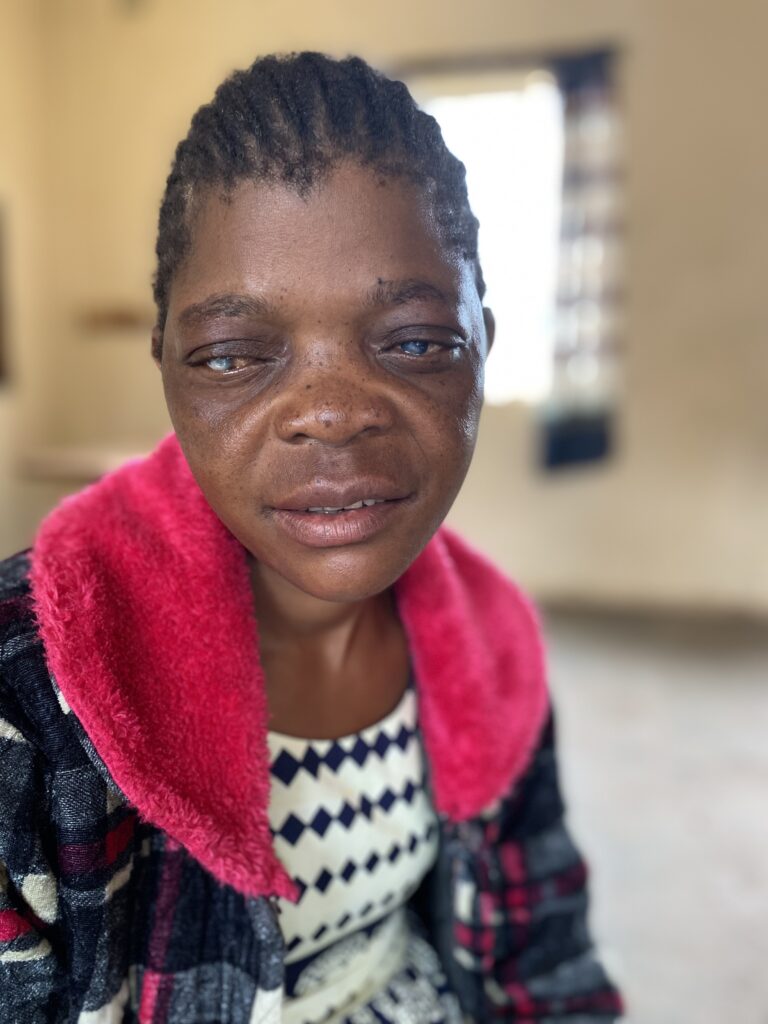Winfreida was born in 1982 in the Sampa district of Zambia. When she was a child of 10, she lost her sight and at that time no one knew there was a school for the blind at St Mary’s. Father White from Canada came to her community, noted her condition and took her to Saint Mary’s school in Kawambwa, that was in 1994.
Winfrieda’s condition could be genetic, causing blindness or perhaps it could be cataracts. There were ten in her family but seven have died and the three remaining have the same condition causing blindness.
Winfreida, despite her blindness has courageously completed high school, with very little accommodations for her condition, and continued on to earn a teaching degree. She is presently waiting to be deployed to a teaching job wherever the government places her. Winfrieda’s story is similar to many others in Zambia. Children are born with conditions that compromise their sight as they mature, with many of these conditions being correctable, with proper eye care. According to a leading local ophthalmologist, it is imperative that all children have access to eye care before the age of 12. Amblyopia (lazy eye) is very treatable and if diagnosed early, the children are much more likely to have improved vision and fewer long-term effects.
Out of the student population of the two schools, 190 are identified as totally blind or severely visually impaired. They all need twice yearly (or more) checkups and follow up. To obtain this treatment they need to travel a great distance at a great cost incurred by transportation, accommodations and food. For most it just doesn’t happen.
Some of the leading correctable causes of visual impairment and blindness, are cataracts and lack of prescription glasses. During their trip to the schools in Zambia for the visually impaired and blind, Inverness County Cares members noted that no one wore glasses, not students, not staff nor sisters. There were no assistive aids such as Fresnel lens or magnifiers. School funds are prioritized to provide food, shelter and education with very little left over for correcting vision.
Winfreida goes on to explain that it is not only blindness that causes her distress, but her eyes hurt a great deal as they are very dry. Sometime she is able to access eye drops that ease the pain, but not always.
Not only Winfreida suffers from eye pain, the children with albinism are very sensitive to light and bright colours, so much so, that when ICC bought new bedding for their dormitories, the sisters avoided bright colours and bought, very muted greys. The people of Inverness County sent many sunglasses and hats to help relieve the suns glare and these were accepted with great joy.
Winfrieda is just one of many children in Zambia who have lost their sight or have limited and distorted vision. Accompanying these conditions are great eye discomfort and pain with little hope of relief of any kind. Inverness County continues to work to provide funds which will go toward increasing the scope of ways we can help with eye care. We thank our supporters who help through donations and filling our refundable bottle and can collection trailers in Port Hood and Mabou so quickly.
Inverness County Cares (ICC) is a local charitable organization, founded in 2012 and based in Inverness County, NS, Canada. ICC works in partnership with Chalice.ca, a Canadian charity, based in Bedford, Nova Scotia. Chalice provides guidance and assistance to help ICC provide a better life for the children at the Kawambwa schools. The Kawambwa Project involves supporting two schools for albino and visually impaired students, in Northern Zambia. Inverness County Cares always welcomes new members. Individuals who wish to donate, can use the donate button on our website http://invernesscountycares.com When using E-transfer, please include your mailing address for CRA tax receipts and a thank you message. E-transfer address: invernesscountycares@gmail.com or send a cheque to Inverness County Cares, 5414 Route 19, Judique, NS, Canada, B0E1P0. Taxation receipts provided.



